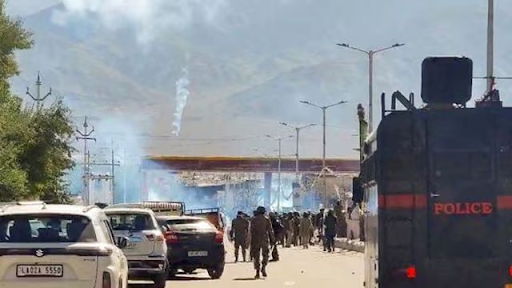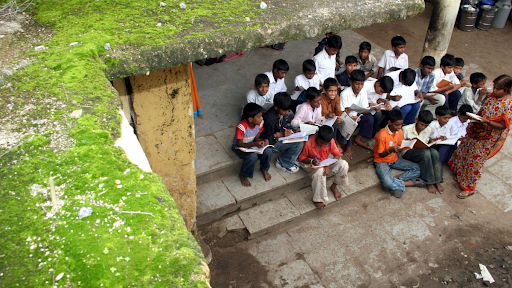
Copyright infringement not intended
Picture Courtesy: https://indianexpress.com/article/explained/explained-politics/hindenburg-report-jpc-probe-sebi madhabi-puri-buch-9512569/
Context: The opposition has demanded a Joint Parliamentary Committee (JPC) to investigate the Hindenburg Research allegations against the SEBI chairperson.
What is a Joint Parliamentary Committee (JPC)?
- The Joint Parliamentary Committee (JPC) is an ad-hoc committee established by Parliament to conduct a thorough examination of a specific subject or Bill.
- It is also formed to investigate specific issues, often involving allegations of financial misconduct or corruption.
|
Formation
|
●A JPC is created when a motion is passed in one House of Parliament (either the Lok Sabha or the Rajya Sabha) and then agreed upon by the other House.
●The motion outlines the committee’s purpose and membership.
|
|
Membership
|
●It consists of members from both Houses, ruling and opposition parties, and is chaired by a member of the Lok Sabha.
●The composition of the JPC is determined by the Parliament, and there is no fixed number of members.
●The committee is dissolved after completing its term or task.
|
|
Functioning
|
●JPCs are tasked with conducting detailed investigations into the issue.
●They can review documents, interview officials, and gather evidence to understand and report on the matter thoroughly.
●Ministers are not generally called by the JPC to give evidence, but with the permission of the Speaker, they can seek information on certain points from ministers and call them.
●The JPC can take oral and written evidence or call for documents in connection with a matter under its consideration.
|
|
Recommendations and
Follow-Up
|
●After completing its investigation, a JPC submits a report with recommendations.
●The government is responsible for responding to these recommendations and reporting on any actions taken.
●The committee’s findings and the government’s responses are then discussed in Parliament.
●The recommendations made by the JPC are advisory and not mandatory for the government to follow.
|
JPCs and Their Findings
2G Spectrum Scam (2013)
- Background: This JPC was set up to investigate alleged corruption in the allocation of 2G spectrum licenses.
- Findings: The report cleared Prime Minister Manmohan Singh of direct wrongdoing but criticized the Department of Telecommunications for not following proper procedures.
- Controversy: The report faced criticism from opposition parties for allegedly covering up the extent of the scam.
Ketan Parekh Share Market Scam (2001)
- Background: This JPC was formed to examine irregularities in the stock market linked to stockbroker Ketan
- Findings: The committee’s investigation revealed that Parekh had manipulated stock prices and caused significant financial damage. It recommended changes in stock market regulations, though not all recommendations were implemented.
- Outcome: Parekh was convicted and sentenced, but the full extent of reforms was not realized.
Harshad Mehta Securities and Banking Transactions (1992)
- Background: This JPC was established to probe a major financial scandal involving stockbroker Harshad Mehta, who was accused of diverting funds and causing a stock market crash.
- Findings: The JPC’s investigation confirmed the allegations and led to criminal charges against Mehta. However, some recommendations were not fully acted upon.
- Outcome: Mehta faced multiple convictions, but the scandal highlighted gaps in financial regulations.
Parliamentary Committees
- The Constitution of India mentions these committees but does not specify their composition, tenure, or functions.
- Parliamentary committees are appointed by the House or nominated by the Speaker/Chief, work under the Speaker's direction, present their report to the House or the Speaker/Chief, and have a secretariat provided by the Lok Sabha/Rajya Sabha.
Types of Parliamentary Committees
Parliamentary committees in India are broadly categorized into Standing Committees and Ad Hoc Committees.
Standing Committees:
- Financial Committees: These include the Public Accounts Committee, Estimates Committee, and Committee on Public Undertakings. Their primary role is to ensure that public funds are spent wisely and effectively.
-
- For example, the Public Accounts Committee (PAC) examines the government's accounts and reports any financial irregularities. In 2010, the PAC played a key role in investigating the 2G spectrum allocation, uncovering massive irregularities and leading to significant reforms in India's telecom sector.
- Departmental Standing Committees: There are 24 such committees that focus on examining the demands for grants, bills, and policies of various ministries and departments. They allow for a detailed analysis that often gets overlooked during parliamentary debates due to time constraints.
-
- DRSCs consist of 31 members—21 from the Lok Sabha (House of the People) and 10 from the Rajya Sabha (Council of States).
- Committees to Inquire: These committees, like the Committee on Petitions or the Ethics Committee, investigate specific matters of public interest or allegations of wrongdoing.
- Committees to Scrutinize and Control: They monitor the executive's actions, ensuring compliance with parliamentary rules. Examples include the Committee on Government Assurances and the Committee on Welfare of SCs and STs (Scheduled Castes and Scheduled Tribes).
- Committees relating to the Day-to-Day Business of the House: These committees ensure the smooth conduct of parliamentary proceedings. The Business Advisory Committee, for example, decides the timing and agenda of parliamentary business.
- House-Keeping or Service Committees: They provide various services to MPs, such as the Library Committee or the Joint Committee on Salaries and Allowances of Members.

Ad Hoc Committees
- These are temporary committees formed for a specific purpose and dissolved after completing their task. For example, the Joint Committee on the Personal Data Protection Bill (2019) was tasked with examining the Personal Data Protection Bill, after extensive consultations with experts and stakeholders, the committee's recommendations helped shape a more comprehensive and balanced law.
Role of Parliamentary Committees
- Scrutinizing Legislative Proposals: They scrutinize bills in detail. This scrutiny ensures that laws are well-thought-out and effective. For example, the Joint Committee on the Personal Data Protection Bill (2019) was instrumental in shaping a comprehensive data protection law.
- Exercising Oversight Over the Executive: Committees monitor the implementation of laws and policies, ensuring that the government is held accountable. They examine budget allocations and expenditures, making sure that public funds are used efficiently.
- Providing a Platform for Engagement: They facilitate dialogue between MPs, experts, government officials, and civil society. This interaction leads to informed and evidence-based decision-making. For instance, the Public Accounts Committee often invites experts to provide insights into complex financial matters.
- Acting as an Interface between Parliament and the People: By inviting public suggestions and feedback, committees enhance public participation in the legislative process. They also disseminate information through reports, making parliamentary activities more transparent.
Challenges in the working of the Parliamentary Committees
Limited Powers and Authority
- Parliamentary committees often lack real power to enforce their recommendations. While they can suggest changes and highlight issues, their findings are not always acted upon by the executive branch.
- The Joint Parliamentary Committee (JPC) on the 2G Spectrum scam in 2011 exposed significant irregularities in the allocation process.
-
- Despite the JPC's detailed report, several issues remained unresolved for years, reflecting limited impact.
- This limitation can be frustrating for committee members and can erode public trust in the accountability of the legislative process.
Delay in Reports and Recommendations
- Committees sometimes take a long time to complete their reports and recommendations, causing delays in addressing pressing issues.
- The JPC on the Bofors scandal, established in 1987, took several years to produce its report. Such delays can hinder timely action on important issues.
Lack of Public Awareness and Engagement
- There is often limited public awareness about the work of parliamentary committees, which can reduce public engagement and scrutiny.
- Many people are unaware of the detailed work done by the Public Accounts Committee (PAC) or the Committee on Public Undertakings (COPU). This lack of awareness can diminish public pressure on the government to act on committee recommendations.
- Greater transparency and public engagement are needed to ensure that committees' work is more visible and impactful.
Political Bias and Partisanship
- Committees may be influenced by political biases and party affiliations, affecting their impartiality and effectiveness.
- During the investigation of various scams, there have been accusations of committees being swayed by political interests rather than focusing solely on the facts.
- Ensuring the non-partisan functioning of committees is essential for maintaining their credibility and effectiveness.
Inadequate Resources and Expertise
- Committees sometimes lack the resources and expertise needed to conduct thorough investigations or scrutinize complex issues.
- The Committee on Subordinate Legislation, which reviews rules made by ministries, often faces challenges due to limited expert input and resources.
- Providing adequate resources and access to expert advice is crucial for enhancing the effectiveness of committee work.
Limited Follow-Up on Recommendations
- Even when committees make recommendations, there is often insufficient follow-up to ensure their implementation.
- The recommendations of the Committees faced delays in implementation, impacting the effectiveness of policies.
- Strong mechanisms for monitoring and ensuring the implementation of recommendations are needed to bridge the gap between committee work and actual policy changes.
Suggestions for Reform in Parliamentary Committees
Strengthening Committee Membership and Structure
- Current Situation: Parliamentary committees are often criticized for having large memberships, which can lead to inefficiencies and dilute accountability.
-
- For instance, the Departmentally Related Standing Committees (DRSCs) in India have 31 members each, making it challenging to achieve consensus and effectively manage discussions.
- Suggested Reform: Reduce the size of committee memberships to a more manageable number. Smaller, more focused committees can make decisions more efficiently and promote better discussion.
-
- For example, a committee size of 15-20 members might be optimal, allowing for more meaningful participation and quicker decision-making.
- Example: In the UK Parliament, most select committees in the House of Commons have around a dozen members, which helps streamline discussions and decision-making processes. Adopting a similar approach could improve the efficiency of Indian committees.
Enhancing Transparency and Accountability
- Current Situation: While parliamentary committees play a key role in oversight, there are concerns about transparency in their operations and the extent to which their findings are acted upon. Committee reports and proceedings are sometimes not widely publicized or accessible to the public.
- Suggested Reform: Improve the transparency of committee operations by making all meetings and proceedings accessible to the public through live streaming and detailed online reports. Ensure that committee recommendations are followed up with clear action plans and regular updates on implementation.
- Example: The U.S. Congress makes its committee meetings and hearings available online, allowing citizens to follow the legislative process closely. Implementing a similar system in India could enhance public trust and engagement.
Increasing Expertise and Specialization
- Current Situation: Committees often struggle with a lack of specialized knowledge on complex issues. Members may not always have the expertise needed to effectively scrutinize technical subjects or large-scale policies.
- Suggested Reform: Include more subject-matter experts and consultants in committee discussions. Committees could benefit from appointing experts to provide testimony and detailed analysis on specific issues. Training sessions for committee members on key topics could enhance their understanding and effectiveness.
- Example: The Joint Committee on the Personal Data Protection Bill (2019) in India involved consultations with data protection experts and stakeholders, leading to more informed and robust recommendations. Expanding this practice to other committees could improve the quality of legislative scrutiny.
Streamlining the Review Process
- Current Situation: The legislative review process can be cumbersome, with lengthy debates and delays in decision-making. Committees sometimes face challenges in meeting tight deadlines or efficiently managing their workload.
- Suggested Reform: Implement a more structured and time-bound review process for bills and issues. Set clear deadlines for each stage of the review process and establish a more streamlined approach to handling committee reports and recommendations.
- Example: In Canada, parliamentary committees operate under a set schedule with deadlines for submitting reports. This structured approach helps ensure timely reviews and reduces delays.
Enhancing Public Participation and Feedback
- Current Situation: Public participation in committee proceedings is limited, and there is often a lack of effective channels for citizen feedback on legislative matters.
- Suggested Reform: Develop mechanisms to increase public involvement in committee work, such as public hearings, online consultations, and feedback surveys. Engaging with civil society organizations and experts can provide valuable insights and enhance the legitimacy of committee recommendations.
- Example: The European Parliament’s Committees frequently hold public hearings and consultations, allowing for broad public input on legislative proposals. Incorporating similar practices could enrich the Indian parliamentary review process.
Improving Coordination Between Committees
- Current Situation: Coordination between different parliamentary committees can be inconsistent, leading to overlap and inefficiencies. Sometimes, committees may work in isolation without aligning their efforts.
- Suggested Reform: Promote better coordination between committees by establishing mechanisms for regular communication and collaboration. For instance, a central coordinating body could oversee and facilitate the exchange of information and collaboration among various committees.
- Example: In Australia, the Parliamentary Committees Secretariat helps coordinate and support the work of various committees, ensuring alignment and reducing duplication of efforts.
Conclusion
- Parliamentary committees are the backbone of the Indian legislative process. They ensure that laws are thoroughly examined, the executive is held accountable, and public participation is strengthened. By providing a platform for detailed discussion and expert consultation, they contribute to the overall efficiency and effectiveness of the Parliament, thereby strengthening Indian democracy.
Must Read Articles:
Parliamentary Committees
Source:
INDIAN EXPRESS
Wikipedia
|
PRACTICE QUESTION
Q. Consider the following statements in the context of the Joint Parliamentary Committee (JPC).
1. It is chaired by the Lok Sabha Speaker.
2. The composition of the JPC is determined by the President.
3. The JPC cannot take written evidence.
4. The recommendations made by the JPC are not mandatory for the government to follow.
How many of the above statements are correct?
A) Only one
B) Only two
C) Only three
D) All four
Answer: A
|












